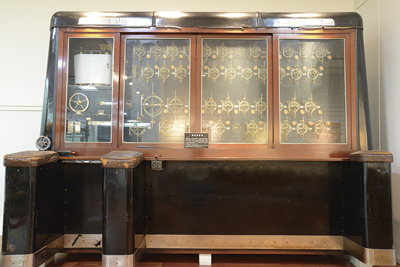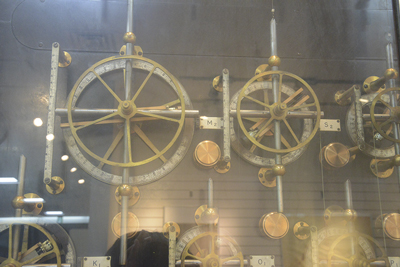

- Home >
- Artifacts of IP Heritage >
- 2012 >
- Tide Predicting Machine
Tide Predicting Machine


| Manufactured in | 1957 |
|---|---|
| Manufactured by | Légé Company (United Kingdom) |
| Owner | Hydrographic and Oceanographic Department, Japan Coast Guard |
| Location of historical materials | Aomi Government Building, Hydrographic and Oceanographic Museum, 2-5-18, Aomi, Koto-ku, Tokyo 135-0064, Japan |
| Visitor information | Open to the public |
| Contact | Administration and Planning Division Tel.+81-3-3595-3620 https://www1.kaiho.mlit.go.jp/ |
Even before the introduction of electronic computers there existed the complex computations for daily life. A number of mechanical computers were designed and utilized for such purposes.
Although ocean tides are simply produced by the attraction forces of the moon and the sun, the diurnal variation depends on their mutual positions and the geographical feature of a particular location. The prediction of tides is important for navigation and safe mooring of vessels at a port. The tide predicting machine was owned and operated by Japan Coast Guard to provide the tidal prediction information of the ports.
When Lord Kelvin analyzed the tidal physics on the later half of 19th century, he concluded that tidal changes can be expressed by the sum of the set of simple periodical variations. Knowing the parametric values of a location then the tide can be predicted by adding the values of the periodical functions. This tide predicting machine was designed to automate such computations with 42 eccentric pulleys and a wire loop connecting them. Currently electronic computers are used for the purpose but the algorithmic basis remains unchanged.
This is the latest, largest and retaining the best condition among a few tide predicting machines preserved in this country.
